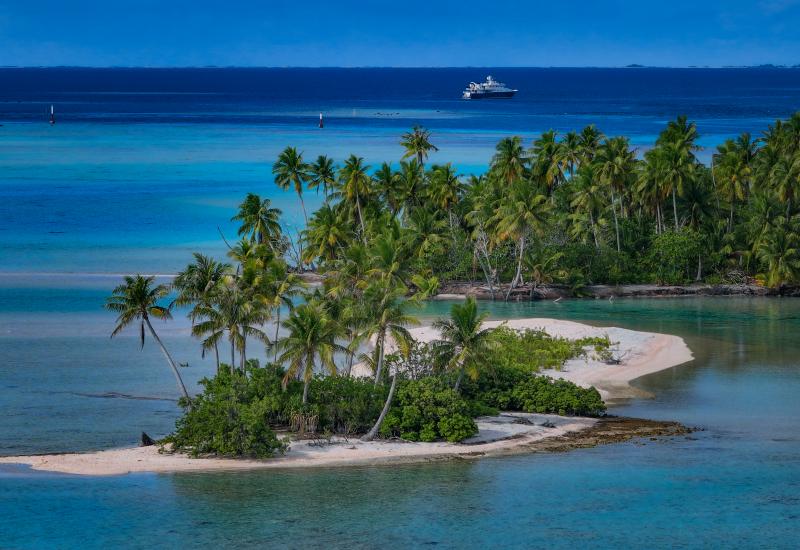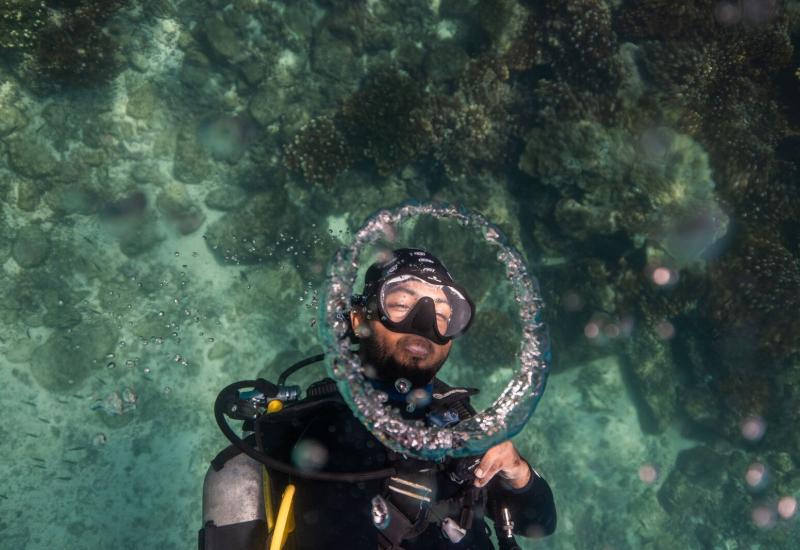Best Destinations for Advanced Diving

BRANDON COLESand tiger sharks aggregate above a school of grunts on the World War II-era wreck of the oil tanker Atlas.
North Carolina
North Carolina’s underwater battlefield is strewn with wreckage that spans centuries. The ironclad warship USS Monitor sank to 230 feet during the Civil War. More accessible to divers at 110 feet is the U-352, a German World War II subdowned by the USCGC Icarus. Now sunk for more than 80 years, the 218-foot U-352 is covered in impressive growth and fish life.
Lying on its side, the U-352 is one of the wrecks off Morehead City that doesn’t task divers with multilevel profiles, a challenge posed by many of the area’s wrecks along with depth. The custom of most local operators, including Five Star PADI Training Center Olympus Dive Center, is to offer unguided tours, asking guests to follow their own dive profiles and dive computers.
It can be a lot to keep track of—and then there are the sharks.
Here, the encounters can be a bit unsettling. Sand tigers lack swim bladders, the organ that helps fish stay afloat; instead they gulp air at the surface and hold it in their stomach, allowing them to hover neutrally buoyant without the need to move. Their hovering can appear haunting. Also, unlike other shark species, the sand tiger edges in much closer to divers, not getting spooked.
Related Learning: PADI Advanced Open Water Diver
“I remember seeing my first sand tiger,” says Bobby Purifoy, owner of Olympus Dive Center, about a dive on the wreck of the Papoose tanker several decades back.
“My face hit gills, and I screamed like a little girl,” he says.
That was back in the ’80s, when these sharks were still more of a rare sighting. “Now, if we don’t see a dozen sand tigers at a wreck, we consider it barren.”
Need To Know
When To Go May to October
Visibility 30 to 100 feet
Water Temps 76 degrees in season
What To Bring Surface marker buoy as an extra safety precaution.
Contact olympusdiving.com
Related Reading: Diving with—and Saving—North Carolina's Sand Tiger Sharks

BROOK PETERSONA diver fins past an elephant ear sponge in a cavern near Grand Cayman’s East End.
Cayman Islands
To define Grand Cayman by its wall diving alone is to overlook the unique geological formations of the island’s East End. There, sites such as Ironshore Gardens and Snapper Hole offer limestone warrens of open caverns.
“These are next-level sites that make you feel as if you’re in an overhead environment, but there’s always a big opening and natural light everywhere,” says Steven Broadbelt, owner of Ocean Frontiers dive center. These sites lead divers to wind around corners, creating a navigational and mental challenge. Buddy pairs can get spread out so much that the divers in the back can’t solely rely on line-of-sight navigation with the guide.
In addition to its geology, this stretch of coast is also famous for healthy coral gardens and big marine life—namely eagle rays and Caribbean reef sharks.
To give divers the chance to see more of the reef systems, Ocean Frontiers’ afternoon Reef Roamer trip allows guests to explore the site in one direction and be picked up by the boat at another area, giving them the chance to cover twice as much ground.
This type of one-way diving, as well as the ironshore mazes, requires that divers bring greater situational awareness, which is one of the most necessary skills required to become a more experienced diver. The greater the diversity of situations a diver has taken on, the more well-rounded and confident they become. “Advanced diving doesn’t only mean deep diving,” adds Broadbelt.
Need To Know
When To Go Year-round
Visibility Typically 100 to 130 feet
Water Temps 79 to 82 degrees
What To Bring Open-heel fins and booties so you can shore dive.
Contact oceanfrontiers.com
Related Reading: Readers Choice: World's Best Places to Go Scuba Diving in 2024

BRANDON COLEDivers use reef hooks to watch sharks and schooling fish in a current at the dive site Blue Corner in Palau.
Palau
Big animals favor Palau for the same reasons advanced divers do. “Large animals need walls, and they need current,” says Marc Bauman, vice president of Sam’s Tours, a dive center and eco-adventure tour company on Palau’s main island of Koror.
Both are found throughout Palau.
The currents usher in nutrients that feed the lowest levels of the food chain and, in turn, keep all levels satiated.
At sites such as Blue Corner, divers rely on metal hooks staked between rock and reef—avoiding live coral—to stay still as sharks ride the current along the wall’s edge, picking off the fish that don’t fare as well against fast-moving water. “Normally, they have to feed the sharks for divers to see predation,” says Bauman, referring to shark dives where handlers proffer bait. “But this is actually natural predation.” This site, along with Peleliu Corner, can be attended by as many as 200 sharks at a time.
Head farther toward shore, amid the coral gardens, to find where bull sharks and blacktip reef sharks congregate to feed on spawning sailfin and red snapper during full moons. “You want spectacular? That’s spectacular,” says Bauman.
Of course, for newer divers looking for less current, it’s best to travel outside of the new and full moons. These two moon phases bring the most extreme currents, with the in-between times bringing milder water flow.
Granted, says Bauman, “Very rarely is there static diving in Palau.”
Need To Know
When To Go Year-round
Visibility 120 feet; July to September can be 60 feet
Water Temps 82 degrees year-round
What To Bring A metal reef hook and a bit of line. Practice using it once or twice before your trip, or practice on an early dive before diving a prime site such as Blue Corner.
Contact samstours.com
Related Reading: Dive Hotspots: Hawaii, Palau and Bahamas
Readers Choice Awards 2024
This year we surveyed 13,322 readers on their favorite destinations, resorts, operators and liveaboards, awarding their top picks across a variety of categories. Our Readers Choice travel feature highlights the first-place destinations in each global region and offers a taste of what makes each a reader favorite. See all winners at scubadiving.com/readerschoice.
Readers Picks
Each operator, resort and liveaboard below won a Readers Choice award in our 2024 survey.
Cayman Islands
Operators
Divetech, Grand Cayman Don Fosters, Grand Cayman Ocean Frontiers, Grand Cayman Reef Divers, Cayman Brac Reef Divers, Little Cayman Sunset Divers, Grand Cayman
Resorts
Cayman Brac Beach Resort Compass Point, Grand Cayman Little Cayman Beach Resort Sunset House, Grand Cayman
Liveaboards
Cayman Aggressor V










